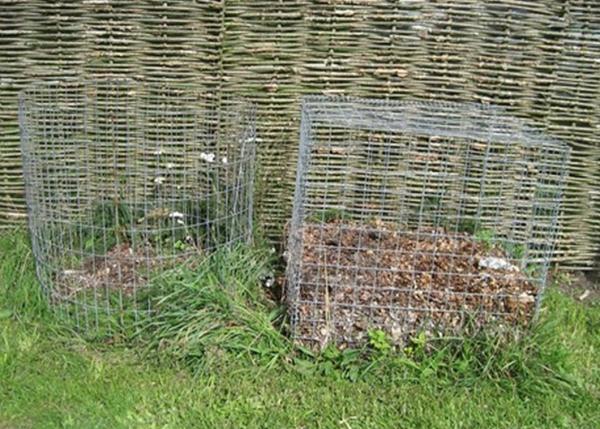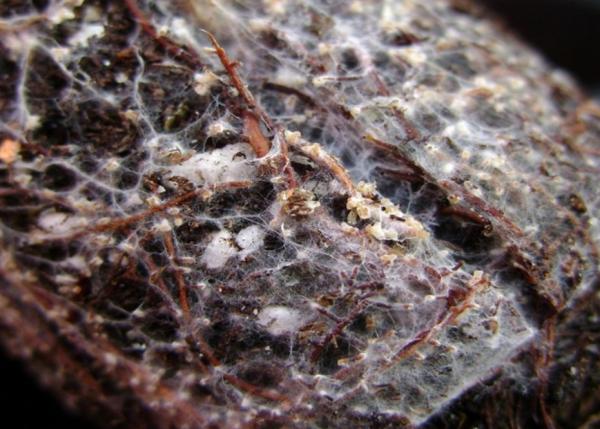5 Excuses to Get into the Garden This October

Create Leaf Mould. One of the best things you can do for your garden is collect up all the deciduous leaves that fall on lawns and paths to make leaf mould. A simple process that is easy to maintain, well rotten leaf mould is as precious as gold dust.
If you have a little space in a hidden corner, make a wire cage that can hold all your fallen leaves. Don’t worry if its in deep shade and hidden under trees, just ensure that you add some water once or twice, no more.
After approx. 18 months the leaves will have rotted down into a friable soil improver that will have white fungal threads growing through it. That’s the good stuff.

The white threads are a group of beneficial fungi that are native to your own garden. They have a symbiotic relationship to your plants that will encourage a healthy root network and can help to mitigate transplantation shock, thereby establishing your plants more quickly. The network created by this group of fungi is the equivalent of the internet for plants and is the main route for them to communicate with each other by sending chemical signals.
You can buy the same product in a powder form called Root Grow or mycorrhizal fungi but why bother when your own is free.
Add a generous handful or two of the leaf mould to the planting hole, ensuring that it is touching the roots, back fill with good quality soil and water well. The fungi will inject themselves into the roots of your plant and spread exponentially fast throughout the soil. This will give the newly establishing plant access to far more moisture and nutrients than its own root structure could.
Protect beneficial insects Help to ensure the health of your garden by creating areas for your beneficial insects to safely overwinter. This does not mean going out to buy expensive bug hotels, many of which don’t work effectively. It’s more useful to create the conditions that the insect would naturally choose.
Firstly, don’t be tempted to cut back everything and clean away all debris to make the garden “tidy.” By doing this you can expose newly emerging buds to the worst winter conditions and could potentially loose the plant. Exposing the soil can leave it in danger of being eroded by wind and rain.
Leaf litter, log piles, hollow stemmed plants, evergreen shrubs, compost heaps, crevices and sheltered nooks in the garden will always provide a welcome refuge to insects.
If you would like to add a few extra layers of protection you can always tie together some hollow plant stems or short pieces of bamboo and place them under the sheltered side of a hedge. Also, you can gently add a few additional logs to those piles that are rotting down.
Waiting until March to cut back your herbaceous borders will ensure that you leave lots of places for hibernating insects and larger creatures to safely wait out the worst of the Winter. When you do eventually cut back the previous years’ growth, leave it is a pile to dry and allow any residents to scurry away to safety. Very tall plants that could be adversely affected by wind rock could always be shortened but leave the cut material around the base of the plant.
Check any nest boxes and add dried grass or twigs which will attract insects as well as being useful for the birds in Spring. If you have areas of tall grasses or wildflowers, most of these will have been cut back in September to ensure that they are healthy for the following year but a few clumps left tall will be a wonderful safe space for those insects and beetles that are drawn to such habitats.
Empty hanging baskets. If you like to grow annual hanging baskets each Summer, now is the time to empty them and compost the spent compost and plants. It should be noted that quite a few of the plants sold for this purpose are actually perennial and these could be planted in your garden to come up next year. Don’t leave them in the basket because the compost will be exhausted and they will not thrive. Diascia, Polyanthus, Primrose, Platycodon, Viola, Verbena, Brachyscombe and Bacopa are all perennial. Many Pelargoniums will do well if cut back and protected from frost.
Remove any liners and check that both the basket and chains are still safe and not rusting away. Store in a dry place ready to use again next Summer.
Overwintering Tender Plants. Now is the time to protect overwintering plants that are not reliably hardy. Pelargoniums should be moved to a sheltered frost-free site. Bougainvillea needs to be moved into a warmer spot (min 10C). It will still loose its leaves but the cold would kill it. Cannas, most bananas and other plants that don’t like winter wet may need to be moved indoors soon. If you have very free draining soil this may not be necessary. Citrus trees don’t need to be kept in a heated space but do need to be kept frost free, so an unheated greenhouse is fine. Olives do best in sheltered sites away from cold easterly winds so potted specimens may need to be moved to more protected positions.
Keep watering potted plants. Many people assume that if it rains, potted plants will automatically get watered, this is seldom the case. The combination of foliage and a small surface area will ensure that most rainwater runs off and your precious plant could be suffering from drought. Ensure your potted plants are kept evenly moist until all growth stops. Also, if the pot is likely to be left sitting in a puddle over the winter, you will need to raise it up to ensure it doesn’t become waterlogged. You don’t need to buy fancy pot feet for this, three bricks arranged in a triangle under the pot is just as good. Just make sure the drainage holes aren’t blocked.
